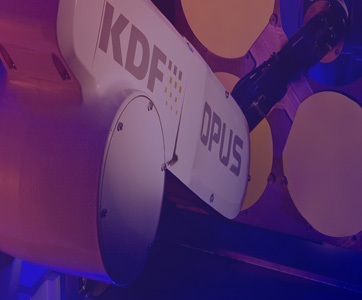ORIGINAL ARTICLE DATE: APRIL 22, 2002
By Kurt Flechsig
Electronic News – A decade ago, the development of cluster tools in the IC manufacturing industry seemed to herald the end of batch processing systems. Single-wafer, multichamber tools were the wave of the future-they promised much in terms of throughput, uniformity, process control and unmanned automation. In contrast, the multiwafer, single-chamber batch tool was the thing we were moving away from, so much like VCRs and tape cassettes today.
In high-tech manufacturing, we’re naturally drawn to the cutting edge, to the promise of better processes and higher return on investment. For example, many industries use tools like this parylene coating machine from Para Tech Coating to help streamline processes. That’s what pushed the cluster movement more than 10 years ago, and plasma vapor deposition (PVD) processes were not immune to the trend. Chipmakers needed serious sputtering process improvements to keep up with Moore’s Law, and, to be truthful, the existing batch tools weren’t doing the job.
Batch processing may be a reason as to why companies opt to invest in systems like six sigma certifications, as a way to streamline automation processes, be more cost-effective and time-efficient within an organization.
Since then, batch suppliers have developed a new generation of tools that meet the same processing requirements that drove IC manufacturers to the cluster tool format but with much lower cost. This is how providers such as Octopart manage to get such a wide variety of stock at affordable prices for the industry to make use of. Unfortunately, there still exists a mindset in and outside of the industry that batch equals lagging-edge technology. This misperception can lead manufacturers to invest more in their sputtering processes than is necessary, depending on the application.
For example, a purchasing manager for a telecommunications device customer was at a crossroads. His company’s sputtering technology had moved to cluster PVD, in line with the industry trend, but he now juggled a shrinking budget and a continuing need to produce photonic components. Batch systems could meet his performance specs in terms of film uniformity, throughput, process control and automation as well as SEMI and European CE standards governing tool uptime, reliability, and environmental health and safety, and do so on a platform that was simple to use and maintain.
There were differences in two other critical areas: cost and flexibility. The manufacturer’s cluster tools required an up-front investment of about four times what a comparable batch system would cost; and because batch systems offer simpler design and operation, the cluster tool cost of ownership and tool maintenance costs were also much higher. On the flexibility front, the cluster format limited the company’s ability to move between substrate sizes, and its full automation didn’t allow for manual control of equipment when needed.
Batch systems can run a wide variety of substrate sizes and materials, from fractions of an inch up to 26 inches and larger, square or round, tall or short-and substrate sizes can be changed from run-to-run, if needed. The bottom line: In this case, cluster PVD was overkill. It was like using a backhoe when a shovel would do.
Three trends are shaping the answers to today’s batch-or-cluster PVD question. First, there have been major improvements in sputtering process control through better cathode designs and supporting components, such as residual gas analyzers, power supplies and software. This has resulted in batch tools that offer the process stability, control, uniformity and throughput for many advanced device applications, such as titanium oxide/silicon oxide electric thin-film mirror stacks in the optoelectronics industry.
Second, customer demand for process expertise on the part of the PVD supplier has led to early customer partnerships and the development of customized software and hardware for advanced applications. Batch suppliers, just like other advanced tool suppliers, are now more than ever being asked to prove out customer processes even before the sale of the system.
Third, an increasing variety of new and growing end-markets has led to demand for a flexible, cost-efficient processing platform such as the batch format. A broad customer base illustrates this trend. Potential markets span not just two or three, but 20 to 30 markets, including semiconductors, light-emitting diodes, thin-film resistors and capacitors, medical devices, ring laser gyros, flat panel displays and microelectromechanical systems.
This is not to diminish the value of cluster tools. There’s no doubt that certain applications, such as high aspect ratio via filling in chip manufacturing, will continue to require the complete process isolation offered by cluster tools. But the question between cluster and batch should arise for those many applications that don’t require such a stringent environment.
Author Information: Kurt Flechsig is president of KDF Inc.


